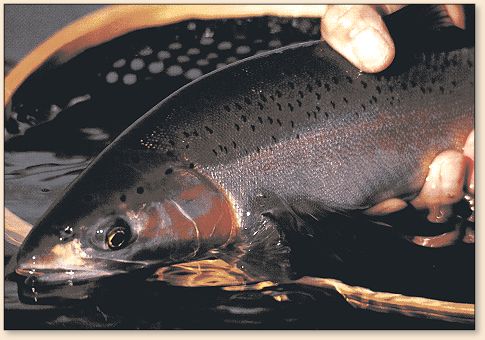|
Scud patterns are simple, but there are a
few points to consider. The most important
point is that when scuds swim, they do so
with their body extended. Only the telson
at the rear of the scud hangs down. Patterns
with pronounced curves are not effective in
stillwaters. Scuds hold their bodies in a curved
fashion when they are dead, resting, feeding or
falling through the water column. For hooks I use
either the Tiemco 2457 scud hook or the 3769
standard wet-fly hook. For a weighted pattern,
use the 3769, a weighted curved or hump shank
hook will ride upside down due to the "keel"
effect of the non-toxic lead wire. One of my
favorite methods is to fish a weighted scud
pattern with a dry line and a long leader of
15 feet or more. Popular sizes range from a
number 8 down to a size 16. My favorite size
would probably be a number 12.

Use fine wire or monofilament to simulate the
scud's segmented body. To imitate the shellback
of the natural I use raffia, plastic, marabou
or pearlescent sheet material. Keep in mind that
the back of the scud is darker than the under-
side. Dubbing mixes are best suited to imitate
the translucent scud. Use either natural furs
or blended synthetics. My personal favorite is
seal fur but this is not always available or
legal. Be sure to brush or pick out the lower
portions of your dubbed bodies. This simulates
the legs and antennae of the naturals. Sparkle
chenille or glass beads also create a life-like
body. ~ PR
More from Phil Rowley's excellent book,
Fly Patterns for Stillwaters next time.
Credits: Excerpt from Fly Patterns
for Stillwaters By Philip Rowley, published
by Frank Amato Publications. We appreciate use
permission.
|


